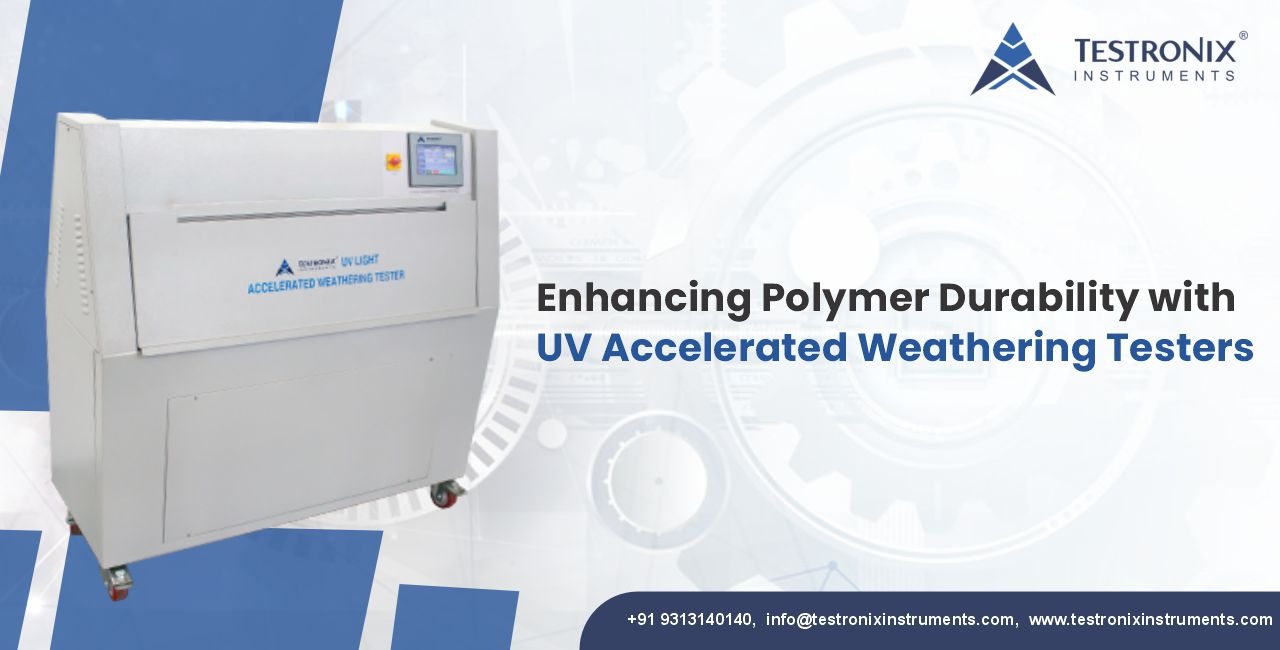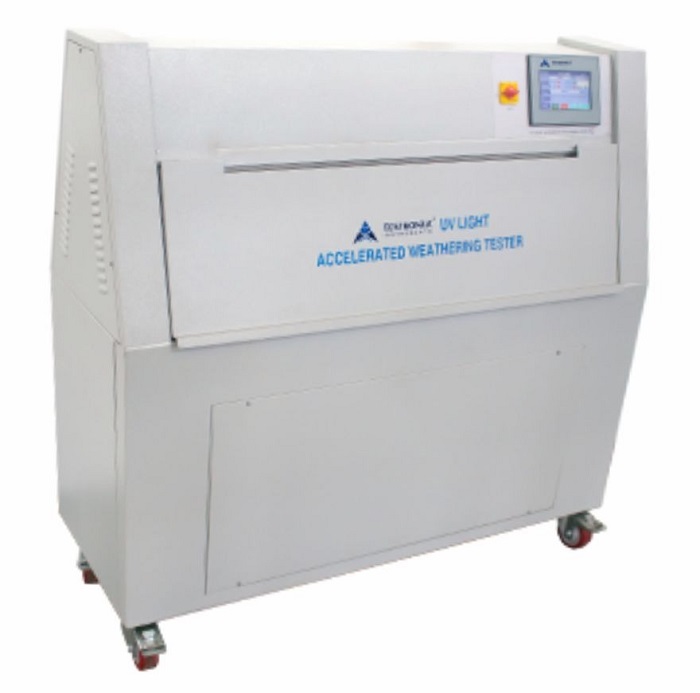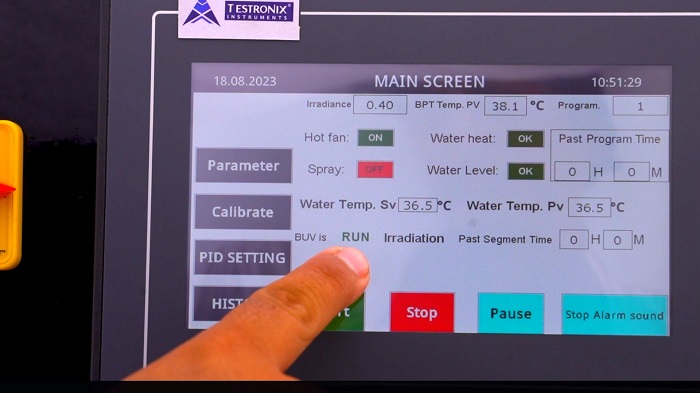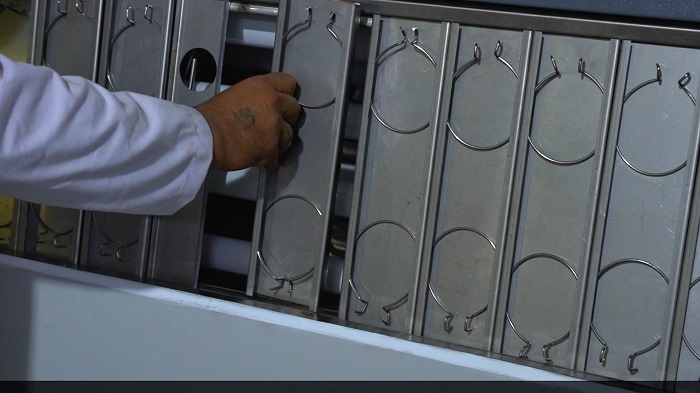Reviewed by Anurag Mishra (Sr. Technical Consultant)

Alright, let's be talking about something super important if you're into making things last, I mean really last. In that regard, today we are looking into the world of polymers: the strong, silent types of the material world, and how we can ensure they last the test of time. Spoiler alert: UV Accelerated Weathering Testers are the superheroes we need. Yep, they all sound like science fiction, but they are your friends for life when it comes to ensuring your polymers don't age faster than you'd like and become brittle, faded shadows of themselves.
Okay, now, envision this. You have just introduced an incredible piece of gadgetry with a fabulous polymer body, sophisticated garden chair, chic pool light, or even an expensive automobile component. It's sitting out there, swallowing the cruel sun rays, throwing around the gusty wind, and relentless rainfall. Then, after some time has elapsed, without testing, your polymer product begins to decay like a fragment of chocolate left in the sun.
Into this fray swoop the hero-like UV Accelerated Weathering Testers. These can simulate a decade of outdoor exposure within a few days. Oh, cool. Because controlled cycles of UV light, moisture, and heat can be applied to materials, you'll get to see how your product will do under harsh weathering conditions without waiting years for that information. Imagine it as a one-way time machine that tells you what the future holds for your polymers!

And here is a little drama that happens on the molecular level. Polymers, though generally very robust, have one Achilles' heel: UV radiation. Under its influence (yes, the same rays that make you slather on sunscreen), polymer chemical bonds break down. Color fades away, cracks arise, and mechanical strength suffers dramatically. Imagine the disintegration of plastic lawn chairs after only one season. That's what will occur if you fail proper testing.
Toss those UV rays against your polymers, watch the drama, and be ready to see how long your material will last until it starts giving in with a UV Accelerated Weathering Tester.
This is the beauty of these testers: they do not simply blast your materials with UV light. No, that's just too easy. These machines simulate the real world by cycling through UV light, and darkness, almost as if it were nighttime, and even moisture, think rain or dew. This means you get to see how your product will behave when confronted with all the environmental elements that may be headed your way.

Then, on the other side of the room, you have UV light mercilessly beaming down and, over here, condensation forming, making your material suspect. It's just fighting for its life. But the bright side of that is what you learn from that is what needs improving—if it's a stronger UV stabilizer in the material, or better weatherproofing over the design.
Consider the pain of marketing a product that degrades in a few months of exposure to sunlight. UV Accelerated Weathering Testers can save you from this horror. They enable you to understand what you need to change and improve in your formulations so that your product will be equipped for whatever Mother Nature throws its way.
These are highly required in industries such as car, construction, and garden furniture. No one needs to replace a faded car dashboard or that garden bench during seasons. No one does.
Okay, let's geek out for a second (but only for a second, I promise). Here's pretty much exactly how a regular UV Accelerated Weathering Test goes:
Set-Up: Your polymer product or a sample of it is placed in the testing chamber.

Light & Dark Cycle: The device exposes the sample to light and dark cycles to mimic sunlight. And it doesn't stop there, though: it's designed to provide time in the dark to more closely represent the cycles of day and night.
Humidity: The cycles include adding moisture through condensation or spraying during these simulations of morning dew or rain, for example, or even humidity.
Results: Within a few days or even weeks in the chamber, you'll see what years of outdoor exposure would do to your product.
Amazingly, changes that would have demanded several years occur within as little as a few days. It is sort of an extreme test for the endurance of polymers.
The result: you could change the formula of your material, add UV inhibitors there, or even fiddle with the design so that, in the final product, it really goes as it should.
These test devices, although material dependent, could, after all, simulate 5 to 30 years of outdoor exposure within days to weeks. That is, you don't have to wait for real years to pass while exposing the real product to weathering conditions. And you get some fast-tracked results that will save you time and money.
Not quite. Although a superlative way to predict performance, this will not give you the number in years. What it does do is mention areas of weakness and provide data for increasing durability so that you may ensure long-lasting products.
While the tests target polymers, they can be applied to any material: coatings, paints, textiles, and even other kinds of materials. If it's exposed outdoors, then that's pretty much guaranteed to be tested this way.
So there you have it! If you want your polymer products to be proud and stand well by the sun, rain, or anything in between, check out a UV Accelerated Weathering Tester. It's giving your product a crash course in survival minus the years!